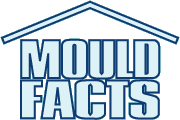Mold Testing In Houses
Mold testing in houses is becoming common as people become more aware of health risks associated with mold growth in houses. Mold testing has 2 components. The first is the visual inspection of the house for any visible mold growth and/or moisture damage. Presence of musty smells is generally an indication of microbial growth. During visual mold inspection, the assessor estimates the extent of (area covered) mold growth. The extent of mold growth is generally categorised into 3 levels; low (level 1), medium (level 2) and high (level 3). The remediation strategies are based on the level of contamination.
The second component of mold testing in houses involves taking samples for laboratory testing. The samples to take depend on what is being investigated. For example, if people are experiencing health problems, such as allergy, which they suspect could be caused by mold, then the investigator could take air samples. This is because people are not affected by mold that is on the wall but by what they inhale in the air. On the other hand, if the investigator is just interested in knowing what type of mold is growing on the wall, they could take either a piece of material (bulk) with the mold or they could take tape samples. Other times, the investigator may collect dust samples.
Extensive mold growth requires the help of a qualified professional. However, there are some basic tests, including air testing, that a homeowner or property manager can do on their own.
If you have any question regarding mold testing, give us a call at 905-290-9101.
The second component of mold testing in houses involves taking samples for laboratory testing. The samples to take depend on what is being investigated. For example, if people are experiencing health problems, such as allergy, which they suspect could be caused by mold, then the investigator could take air samples. This is because people are not affected by mold that is on the wall but by what they inhale in the air. On the other hand, if the investigator is just interested in knowing what type of mold is growing on the wall, they could take either a piece of material (bulk) with the mold or they could take tape samples. Other times, the investigator may collect dust samples.
Extensive mold growth requires the help of a qualified professional. However, there are some basic tests, including air testing, that a homeowner or property manager can do on their own.
If you have any question regarding mold testing, give us a call at 905-290-9101.
Labels: allergy, mold testing, types of mold



0 Comments:
Post a Comment
<< Home